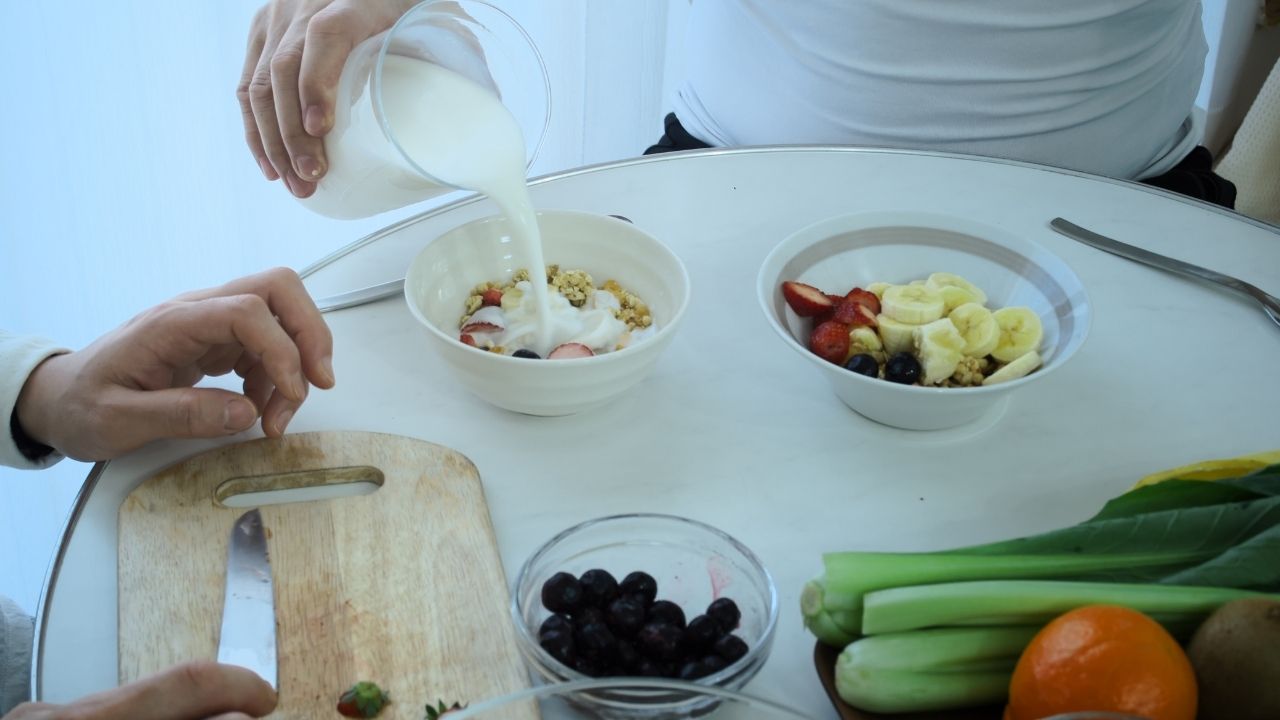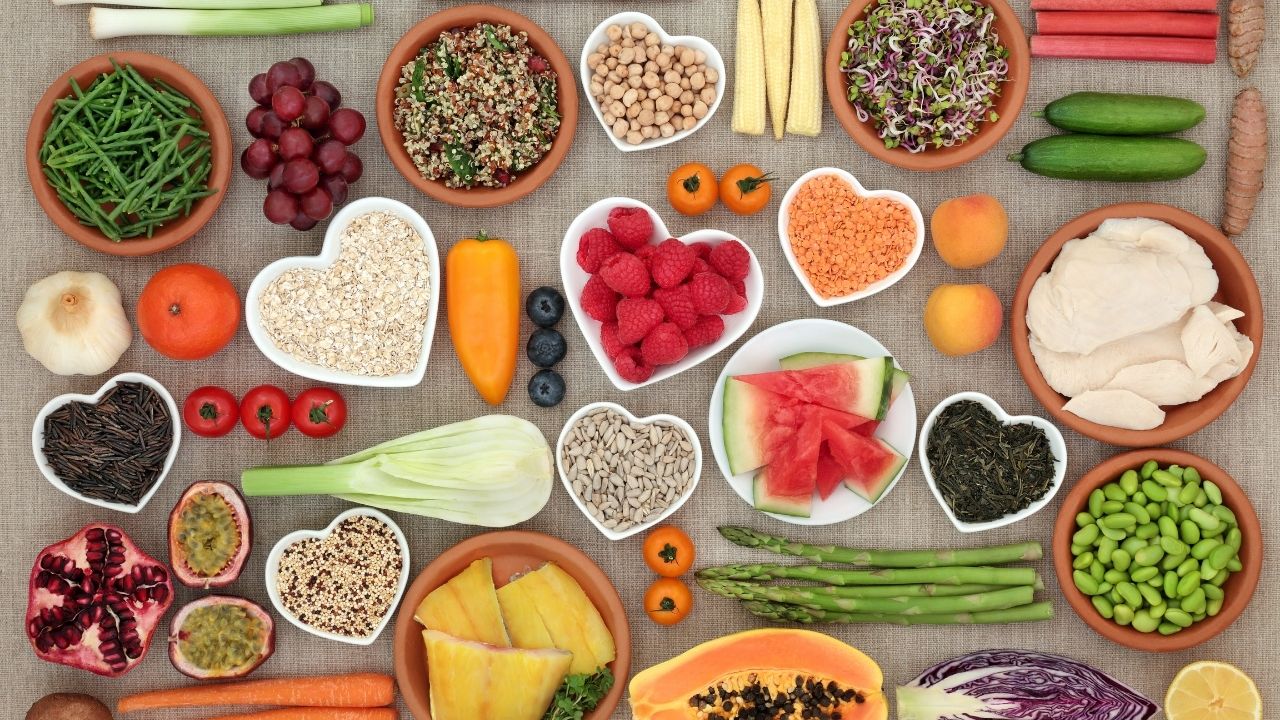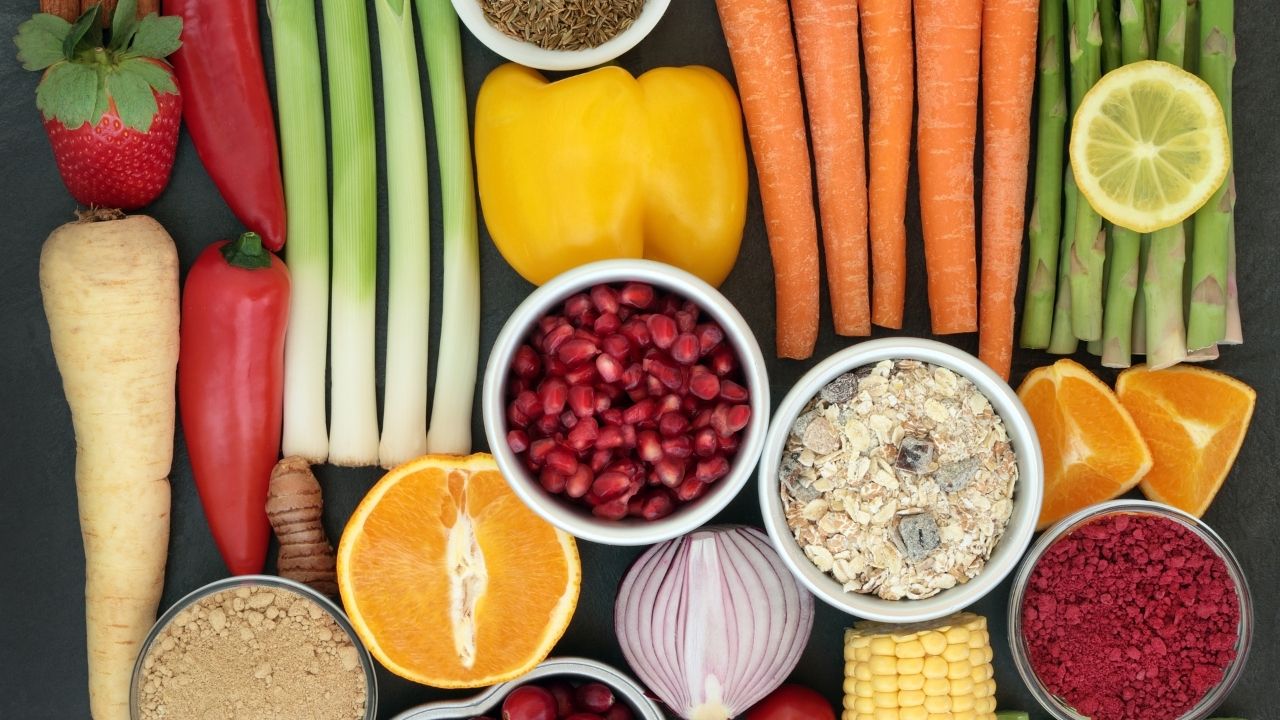
Preschoolers have a lot of learning ahead of them and need to be able to communicate with their parents. It is your responsibility as a parent to ensure they receive a healthy, balanced diet that will allow them to develop and grow. To keep them active and healthy, they should also be physically active. Guide them in good eating habits without nagging them too much, but they should be encouraged to eat a wide variety of foods. There are many strategies that you can employ to help your child adopt healthy eating habits.
First, make it fun. Set a schedule for family meals. Discuss what you're serving and decide what you're willing to eat with your children. Never give your young child their own food. Instead, let them choose among a wide range of healthy foods. You can't argue with a young child if they don't like something, but don't force them to eat if they are not eating.

Next, try offering a wide variety of foods. Some preschoolers may be picky. However, creativity can make healthy foods more appealing. Toast whole wheat bread, English muffins, or a bagel can look like an owl. Use nut butter, cream cheese, or both to give your child the option. Cut bananas and round oat cereal to represent feathers and wings. This is a fun way of introducing fruits and vegetables.
Finally, choose healthy food. Preschoolers will look up at their parents and follow them in what they eat. Be sure to include healthy foods. Limit sodium, saturated fat and added sugars. It will be necessary to make adjustments for the child's body size, sexual preference, and exercise level. It is important to remember that a balanced diet not only will nourish your child but will also help you achieve milestones.
To help your child learn about food, consider preparing and serving it yourself. A fun way to introduce preschoolers is to cook in the kitchen. It is also a great way for them to learn about the texture and smell of different foods. Participation in cooking can be a way for children to describe the taste and smell of food. They will be more interested in food if they feel they can be involved.

A good way to encourage healthy eating is to include roasted veggies in the diet. Fresh herbs and lemon juice can be used to enhance the flavor of roasted vegetables. Broccoli can even be added to stir fries or pizzas. For younger children, vegetable faces can be created by blending grated carrot as the hair, cherry tomatoes as the eyes, and capsicum strips for the mouth. If you make the food interesting, your child is more likely to be excited about it and will enjoy it even more.
FAQ
What can I do to boost my immune system?
There are trillions upon trillions on cells in the human body. Each cell is responsible for creating organs and tissues with specific functions. A cell that dies will be replaced by another. The chemical signals known as hormones are used to communicate between cells. Hormones regulate all bodily functions from growth and developmental to metabolism and immunity.
Hormones can be described as chemicals produced by glands in the body. They travel through bloodstreams and act as messengers that control the function of our bodies. Some hormones are made internally, while others are created outside the body.
When a hormone-producing gland releases their contents into the bloodstream, hormone production begins. Once hormones are released, they move through the body to reach their target organ. Some hormones are only active for a brief time. Some hormones remain active for longer periods of time and can continue to have an impact on the body's function long after they are gone.
Some hormones can only be produced in large quantities. Others are only produced in very small quantities.
Some hormones only are produced during certain periods of life. For instance, estrogen is produced during puberty, pregnancy, menopause, and old age. Women can get estrogen to build breasts, prevent osteoporosis, and keep their bones healthy. It helps to stimulate hair growth and maintains skin's softness.
These are 5 ways you can live a healthy and happy life.
Living a healthy lifestyle involves eating right and exercising regularly. Eating well means avoiding processed foods, sugar, and unhealthy fats. Exercise is good for your body and muscles. You can improve your memory and concentration by getting enough sleep. Stress management reduces anxiety, depression and other symptoms. Fun keeps us happy and healthy.
What is the best way to live a healthy lifestyle?
Healthy lifestyles include eating healthy food, regular exercise, good sleep, and avoiding stress. These guidelines will help you live a long, healthy life.
Small changes to your diet or exercise routine can help you start losing weight. To lose weight, you can start walking for 30 mins each day. If you're looking for a way to increase your activity, consider taking up swimming or dancing. An online fitness program such as Strava or Fitbit that tracks your activity could be a good option.
What is the difference in calorie and kilocalories?
Calories are units used to measure the amount of energy in food. The unit of measurement is called a calorie. One calorie is equal to one degree Celsius in energy.
Kilocalories refer to calories in another term. Kilocalories are expressed in thousandths (or a calorie). 1000 calories, for example, equals one kilocalorie.
What can I do to lower my blood pressure?
You must first determine the cause of high blood pressure. Next, you must determine the cause and take steps to decrease it. This could mean eating less salt, losing some weight, taking medication, and so on.
Exercise is also important. Walking can be a good alternative to regular exercise if time is tight.
A gym membership is a good idea if you don't like how much exercise your doing. A gym that has other members who are motivated by your goals will be a good choice. It's much easier to follow a routine if someone is with you at the gym.
How much should I weight for my height and age? BMI calculator & chart
To determine how much weight loss you need, a BMI calculator is your best friend. The healthy BMI range for a healthy person is 18.5 to 24.9. You should lose about 10 pounds each month if you are trying to lose weight. To calculate your BMI, simply enter your height and weight into the BMI calculator.
This BMI chart can help you find out if or not you are obese.
Statistics
- This article received 11 testimonials and 86% of readers who voted found it helpful, earning it our reader-approved status. (wikihow.com)
- nutrients.[17]X Research sourceWhole grains to try include: 100% whole wheat pasta and bread, brown rice, whole grain oats, farro, millet, quinoa, and barley. (wikihow.com)
- According to the 2020 Dietary Guidelines for Americans, a balanced diet high in fruits and vegetables, lean protein, low-fat dairy and whole grains is needed for optimal energy. (mayoclinichealthsystem.org)
- In both adults and children, the intake of free sugars should be reduced to less than 10% of total energy intake. (who.int)
External Links
How To
What does "vitamin" actually mean?
Vitamins are organic compounds naturally found in food. Vitamins are essential for our bodies to absorb nutrients from the foods we eat. Vitamins cannot come from the body so food must provide them.
There are two types of vitamins: water soluble and fat soluble. Water-soluble vitamins dissolve easily when they are dissolved in water. These include vitamin C (thiamine), Vitamin B1 (riboflavin), Vitamin B2 (riboflavin), Vitamin B3 (niacin), Vitamin B6 (pyridoxine), Vitamin C, B1 (thiamine), Vitamin B2 (riboflavin), Vitamin B3 (niacin), and Vitamin B6 (pyridoxine). The liver and fatty tissues are home to fat-soluble vitamins. Some examples include vitamin D and E, K, A and beta carotene.
Vitamins can be classified according to biological activity. There are eight main groups of vitamins.
-
A - essential for normal growth and maintenance of health.
-
C is important for nerve function and energy production.
-
D - Essential for healthy teeth and bones.
-
E is necessary for good vision, reproduction.
-
K - essential for healthy muscles, nerves, and bones.
-
P – vital for building strong bones.
-
Q - Aids digestion and iron absorption
-
R – Required for the formation of red blood vessels.
The recommended daily allowance (RDA) of vitamins varies depending on age, gender, and physical condition. The U.S. Food and Drug Administration sets RDA values.
For adults 19 years and over, the RDA of vitamin A is 400mg per day. Pregnant women require 600 micrograms daily to support fetal development. Children ages 1-8 require 900 micrograms per day. Infants under one year of age require 700 micrograms per day, but this amount decreases to 500 micrograms per day between 9 months and 12 months of age.
Children aged between 1-18 years require 800 micrograms of sugar per day, while overweight children need 1000 micrograms. Children who are underweight receive 1200 micrograms every day to meet their nutritional requirements.
Children 4-8 years old who have anemia must consume 2200 micrograms of Vitamin C daily.
2000 micrograms are required daily for good health in adults over 50. Due to their increased nutrient needs, pregnant and breastfeeding women need 3000 micrograms daily.
Adults over 70 years of age need 1500 micrograms per day since they lose about 10% of their muscle mass each decade.
Women who have been pregnant or are lactating require more than the RDA. Pregnant woman need 4000 micrograms daily in pregnancy, and 2500 per day after childbirth. Breastfeeding mothers need 5000 mg per day when breastmilk is being produced.